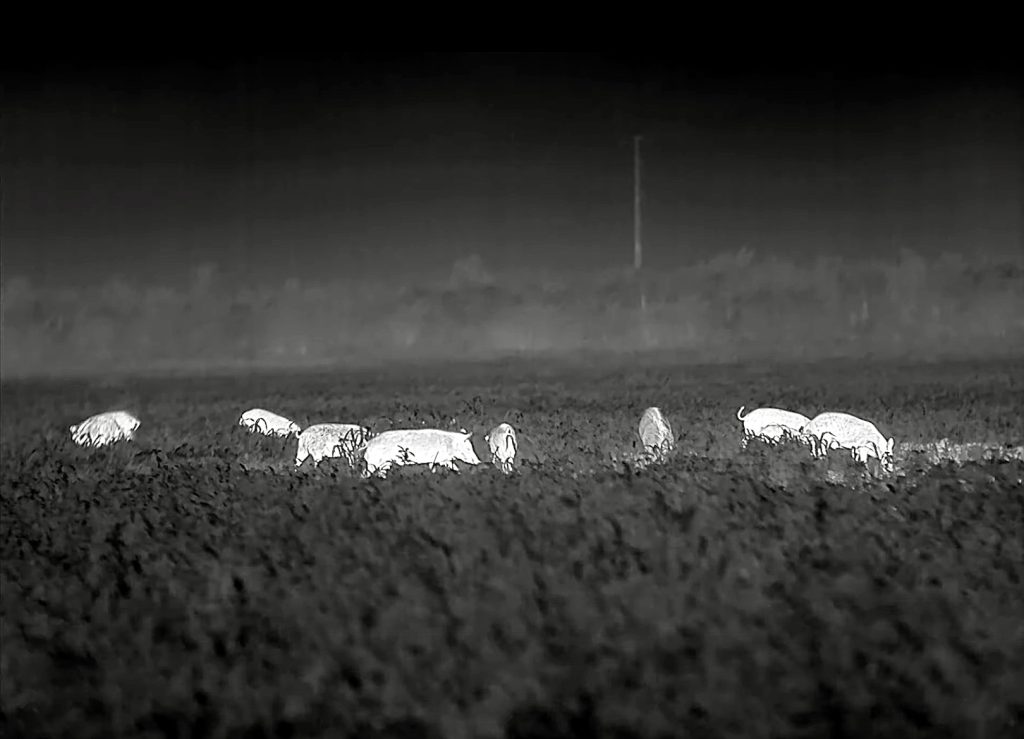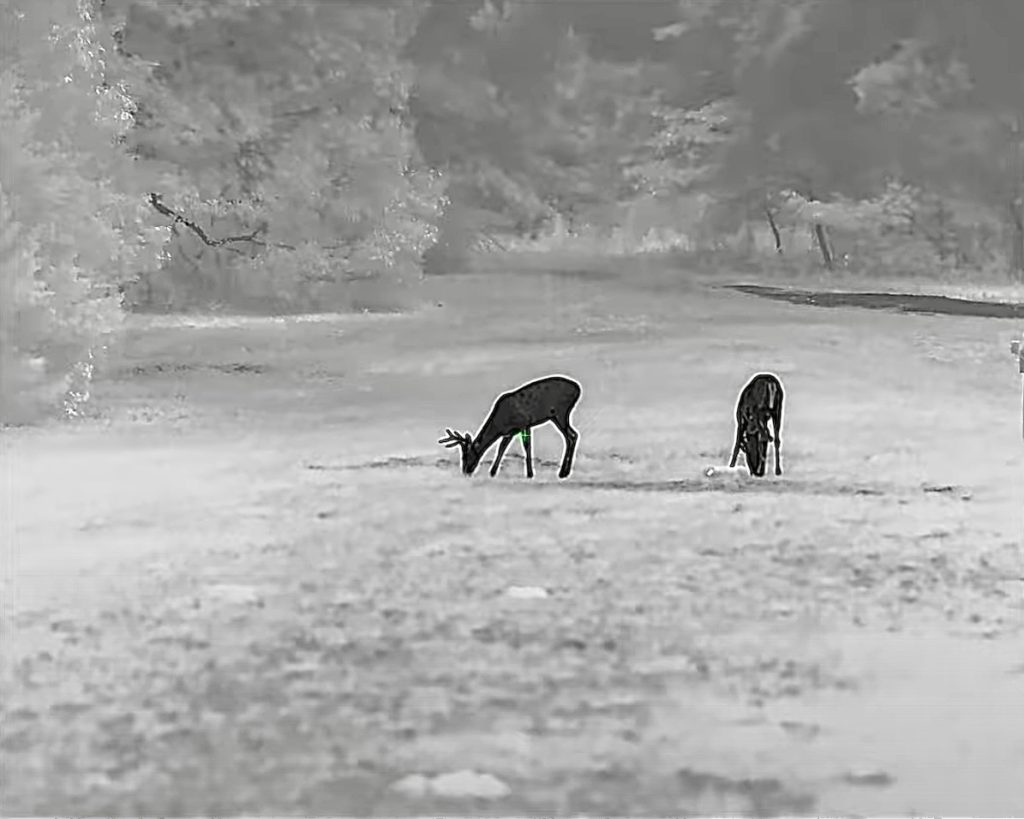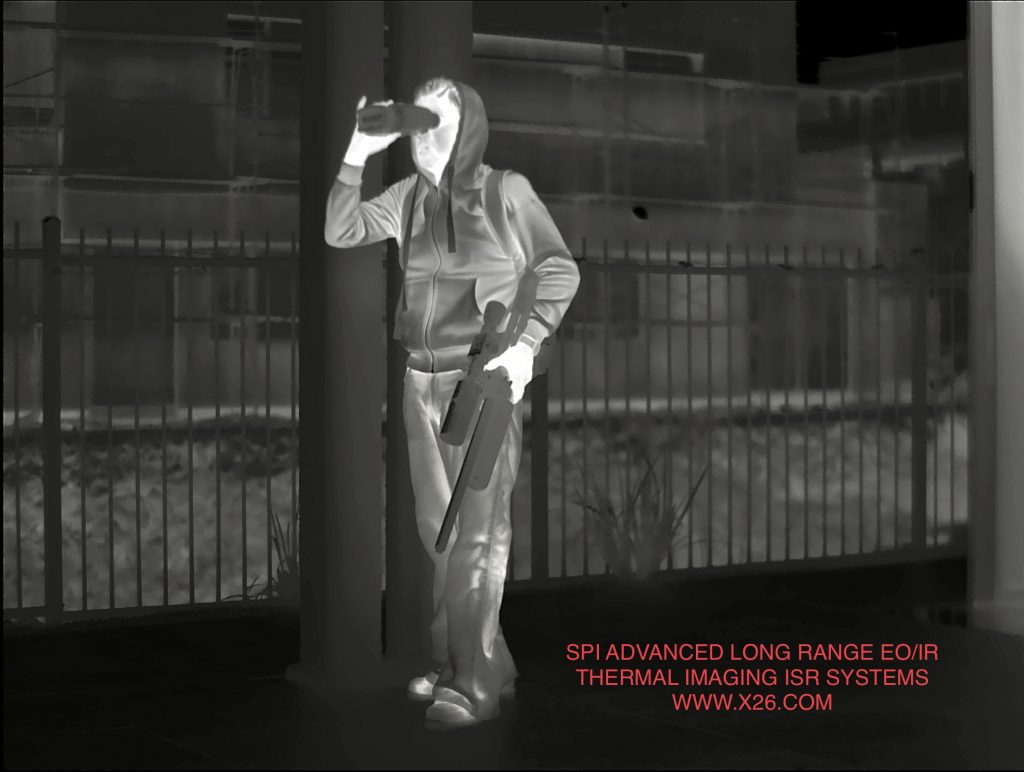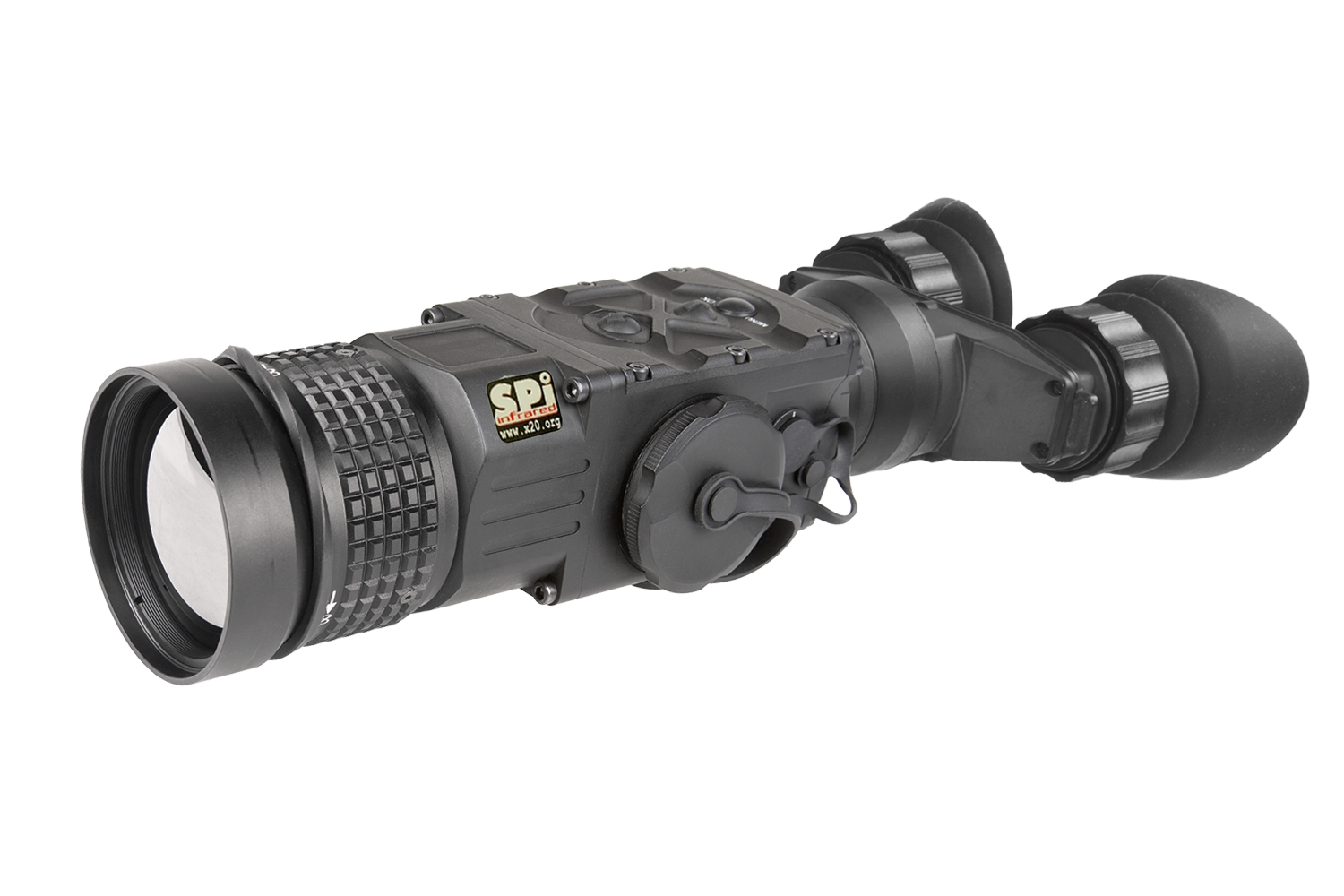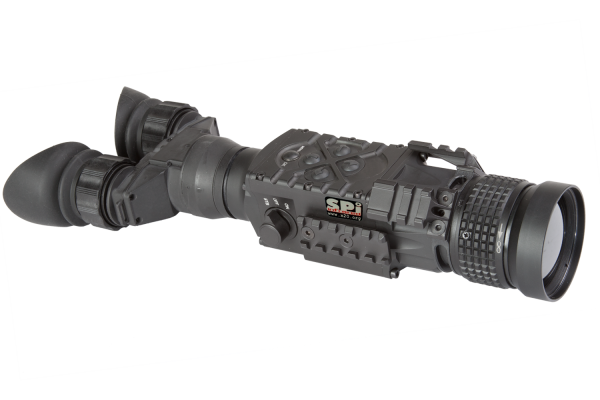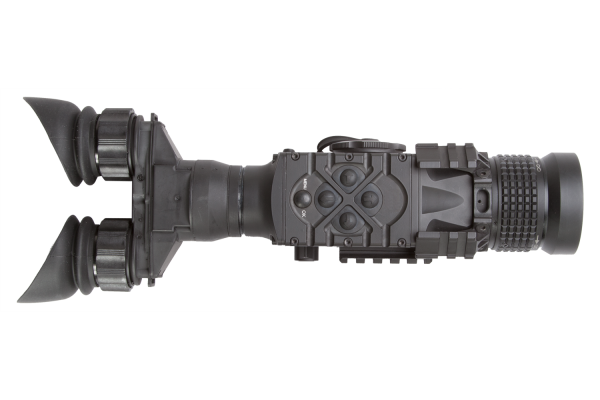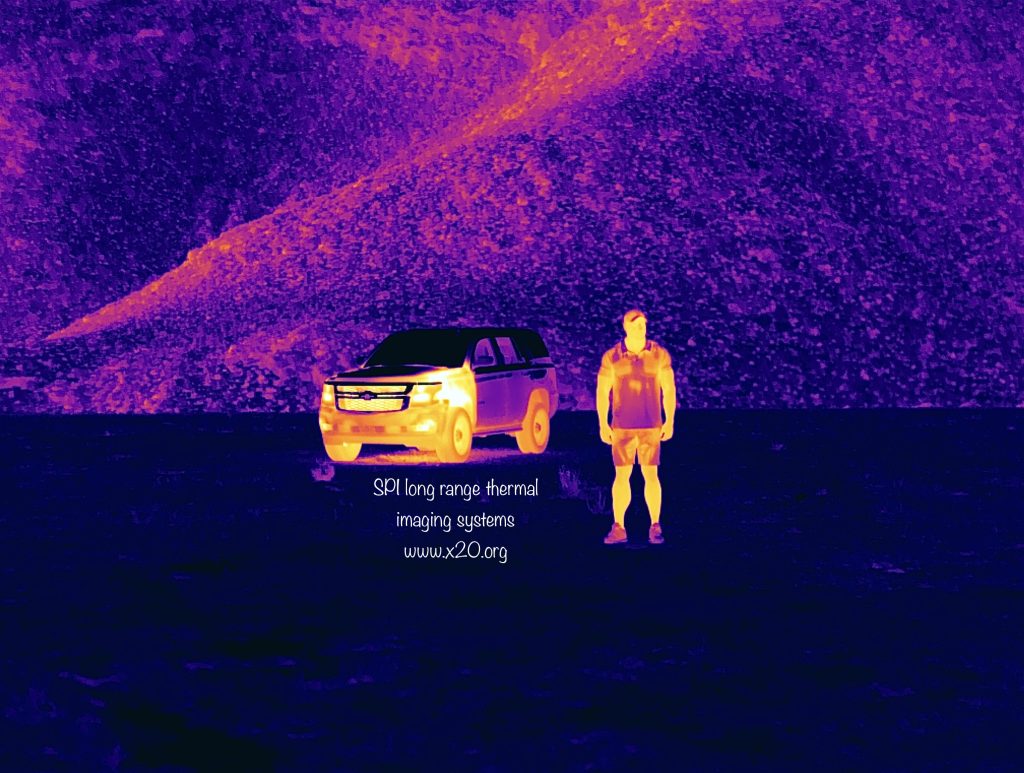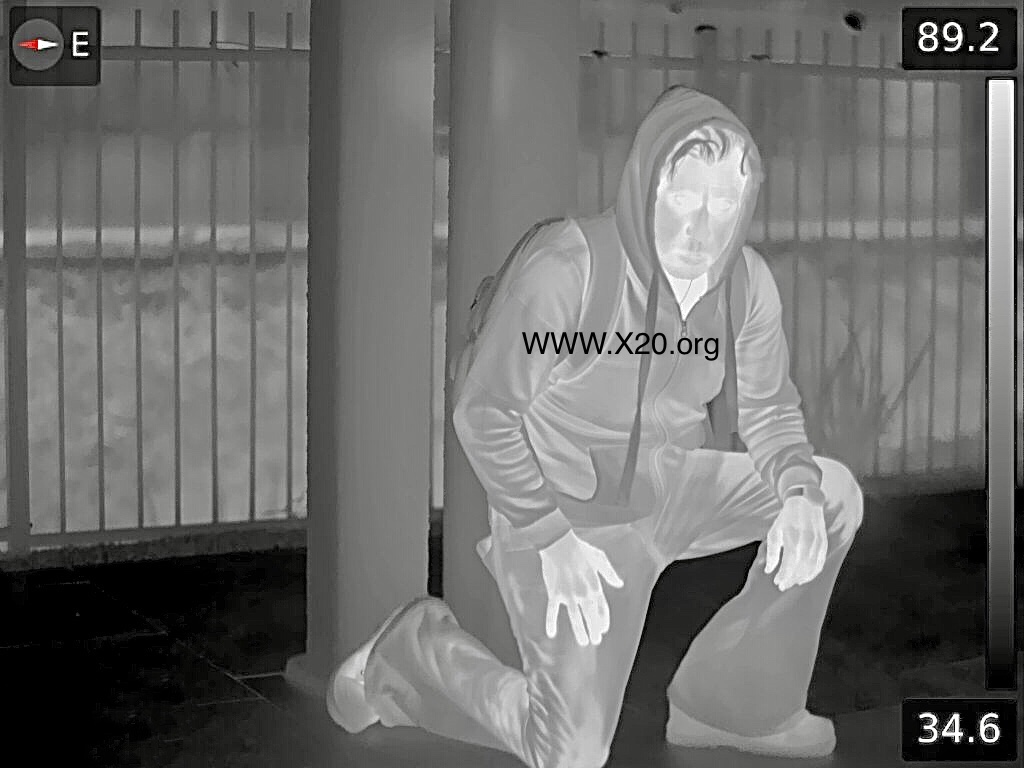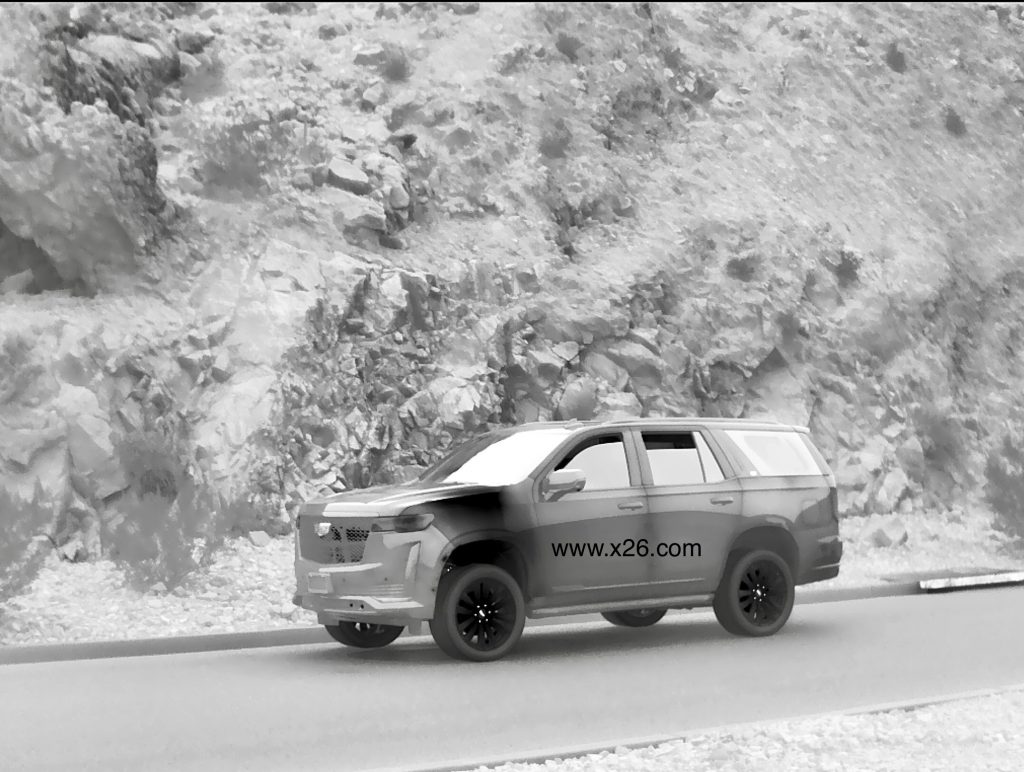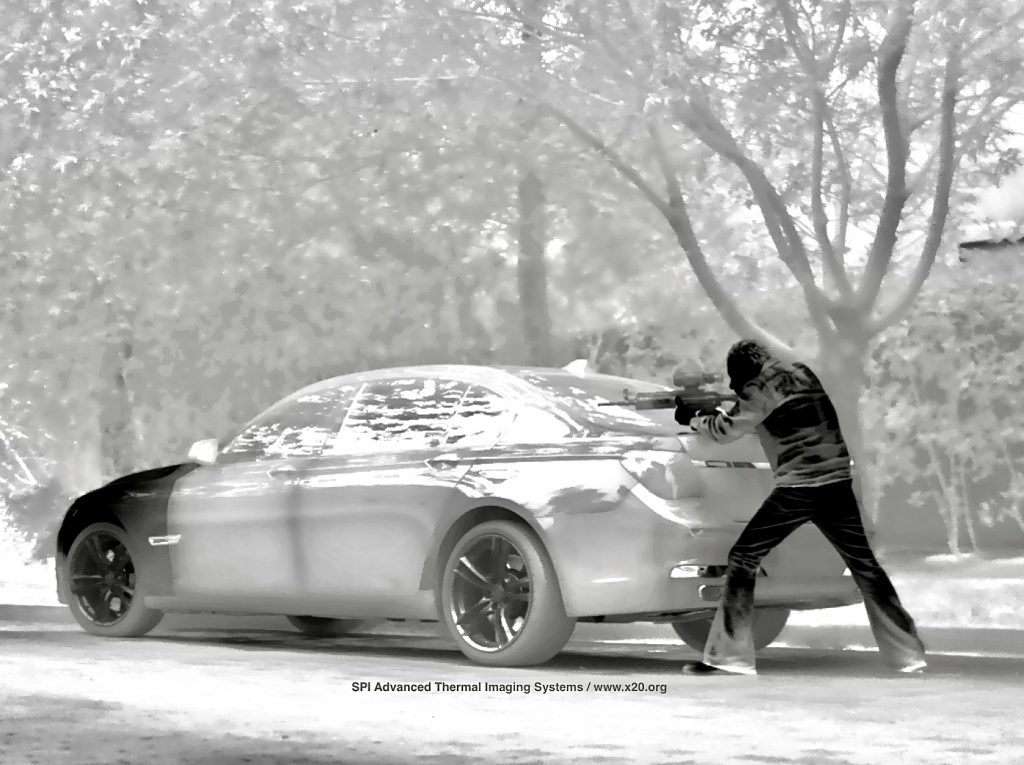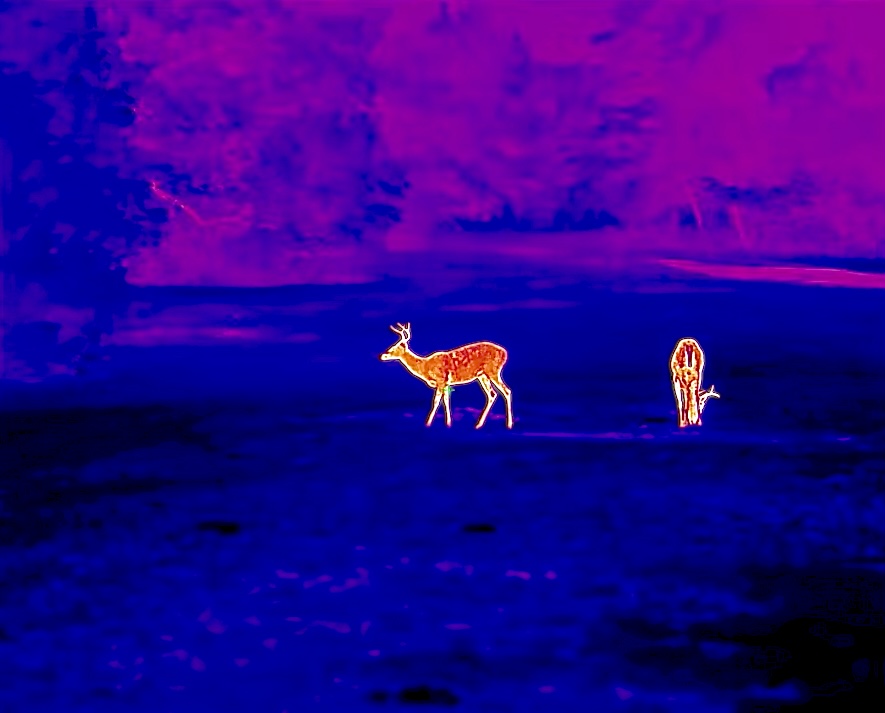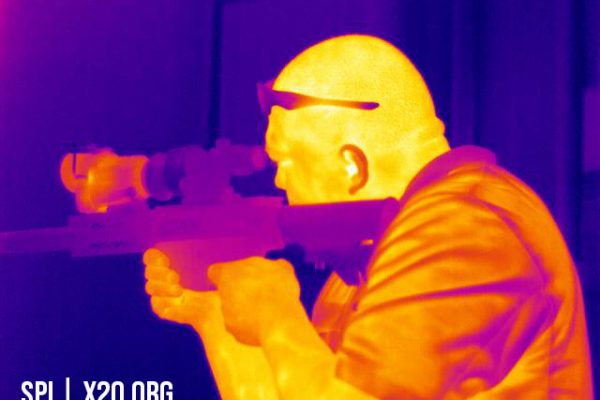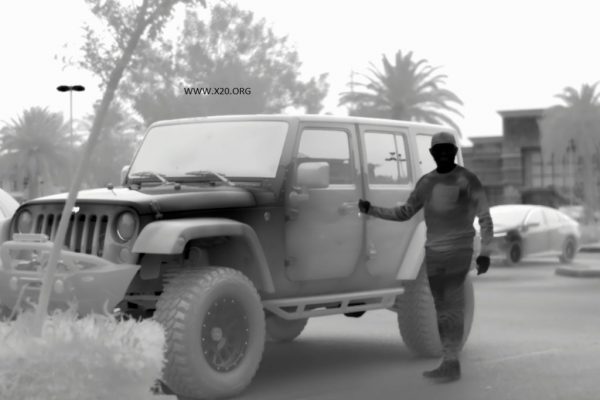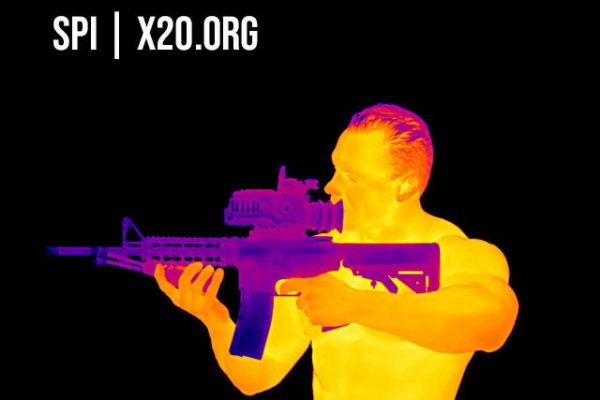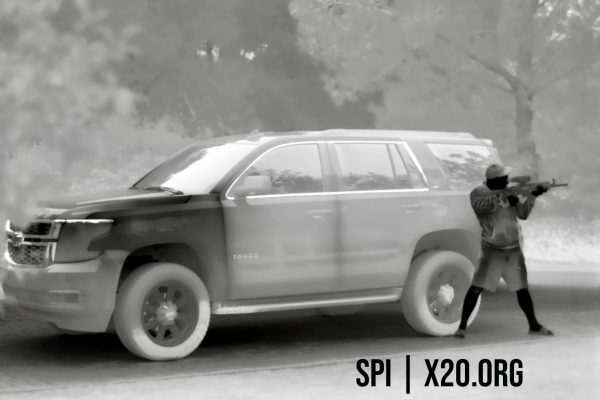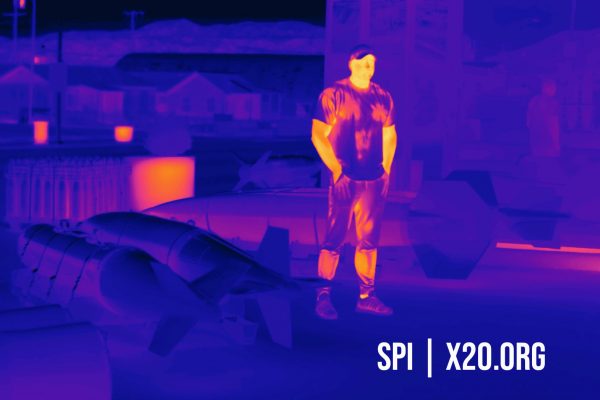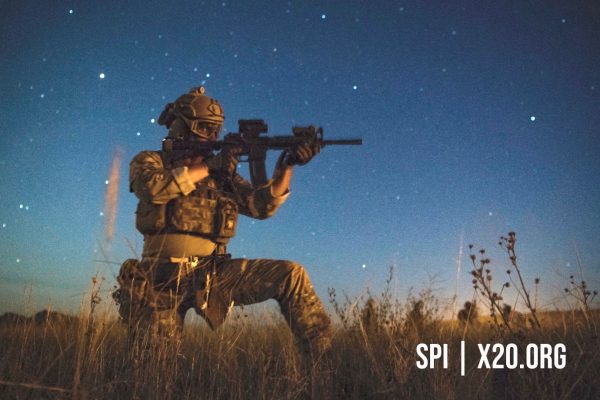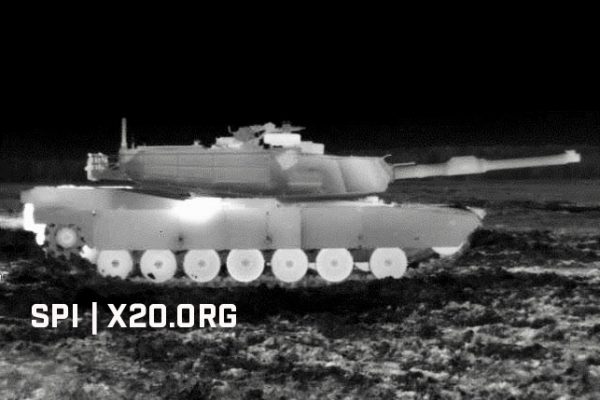US MFG high grade Uncooled thermal IR Microbolometer
Refresh rate: 60 Hz
Resolution: 640 x 512
FOV: 11.8° (H x V)
DESCRIPTION AND FEATURES
The SPI Hornet is the latest and most technologically-advanced thermal imaging device for observation currently available on the market. Bi-ocular is made of high-grade aircraft aluminum alloy, making the unit both durable and lightweight. Due to its waterproof capability the Cobra performs well even in severe weather conditions and challenging environments. The Hornet’s user-friendly interface, comfortable and ergonomic buttons, together with the wireless remote control makes adoption and application incredibly simple. Based on FLIR TAU 2 VOx microbolometer core the Hornet offers a variety of image palettes: white hot/black hot/ Rainbow, etc. that can be easily adapted depending on different environmental conditions. This high-tech bi-ocular can take either two CR123A 3V Lithium Batteries or two CR123 rechargeable batteries, with voltage ranging from 3.0 V to 3.7 V. In addition, the external battery pack connected via standard micro-USB port provides an additional operating time.
- High resolution high sensitivity thermal detector
- Long range thermal binocular with zoom
- Dual eye viewing system for comfortable, extended viewing sessions
- Lightweight and robust design
- Easy to operate device
- Manually adjustable eyepiece and objective lens
- Real-time display
- Multiple color palettes
- Zoom: 1x, 2x, 4x, and 8x
SPECIFICATIONS
| Detector type | 640×512 Uncooled Microbolometer |
| Refresh rate | 60 Hz |
| Start up | 3 seconds |
| Lens system | 50 mm; F/1.0 |
| Optical magnification | 1.7× |
| Zoom | 2×, 4×, 8× |
| Diopter adjustment range | -5 to +5 dpt |
| Focusing range | 5 m to infinity |
| Display | (800×600) |
| Video output | PAL (768×574 pixels)/ NTSC (640×480 pixels) |
| Temperature imaging palettes | White Hot, Black Hot, Fusion, Rainbow, Globow, Ironbow1, Ironbow2, Sepia, Color1, Color2, Ice-Fire, Rain, and OEM |
| Interfacing | S620 Connector (Power In, Analog Video In/Out, Digital Video Recorder) Micro USB (External Battery Pack) |
| Battery Type | Two CR123A 3V Lithium Batteries or CR123 Type Rechargeable Batteries with Voltage from 3.0V to 3.7V (2) |
| Battery Life (Operating) | Up to 4 hr (optional up to 12 hrs) |
| Operating Temperature Range | -40°C to +50°C (-40°F to +122°F) |
| Weight | 0.9 kg (1.9 lbs) |
| Overall Dimensions | 288 x 109 x 60 mm (11.3 x 4.2 x 2.3 in) |
| Package Includes | long Range Thermal imaging binocular, Lens Cloth, Soft Carrying Case, User Manual |
WHAT ARE LONG RANGE THERMAL IMAGING BINOCULARS?
MILITARY THERMAL BINOCULARS ARE A SPECIAL DEVICE THAT ALLOWS THE USER TO SEE IN TOTAL DARKNESS THANKS TO A SPECIAL OPTICS WITH INFRARED RADIATION.
HOW THE LONG RANGE THERMAL FLIR BINOCULAR CAMERA WAS DISCOVERED?
IN FACT, SUCH A VITAL DEVICE COULDN’T EVEN EXIST WITHOUT THE DISCOVERY OF INFRARED RADIATION. LUCKILY, IN 1800, A NECESSARY BREAKTHROUGH WAS ACHIEVED BY ASTRONOMER SIR WILLIAM HERSCHEL. SINCE THEN, INFRARED LIGHT WAS MAINLY USED FOR MEASURING TEMPERATURE. AS A RESULT, THERE WAS ACTIVE EMPLOYMENT OF NEW TECHNOLOGY IN DAILY LIFE, SO THERE APPEARED A HIGH DEMAND FOR THE PRODUCTION OF APPROPRIATE DETECTORS AND SENSORS FOR BOLOMETERS AND THERMOMETERS. AND THE NEXT GAME-CHANGING STEP WAS MADE BY LEOPOLDO NOBILI: APPLYING THE SEEBECK EFFECT, IN 1829, HE BROUGHT THE FIRST THERMOCOUPLE INTO THE WORLD. IT WAS THE BETTER VERSION OF A REGULAR THERMOMETER AND THE RAW VERSION OF A THERMOPILE. THE DEVELOPMENT OF DETECTORS WAS INTERRUPTED BY WORLD WAR I. BUT BEGINNING IN 1913, THERE APPEARED MORE AND MORE NEW DISCOVERIES FOR CIVILIANS WHERE
LONG RANGE THERMAL IMAGING BINOCULARS
TECHNOLOGY WAS SUCCESSFULLY IMPLEMENTED.
THE FIRST MILITARY THERMAL BINOCULAR CAMERA APPEARED IN BRITAIN FOR AIR DEFENSE IN 1929. THE INVENTOR WAS KÁLMÁN TIHANYI – A PHYSICIST FROM HUNGARY. MEANWHILE, IN THE USA IT WAS THE LINE SCANNER. THIS DEVICE WAS DEVELOPED BY THE UNION OF COMMERCIAL COMPANY TEXAS INSTRUMENTS AND THE US MILITARY IN 1947. HOWEVER, IT HAD A MAJOR DRAWBACK – IT TOOK ONE HOUR TO DRAW THE IMAGE.
THE ADVANCED THERMAL BINOCULAR CAMERA ALTERNATIVE WAS IMPLEMENTED FOR BRITISH DEFENSE IN THE 1950S. IT WAS A LINESCAN UNIT THAT COMPRISED A SPECIAL DETECTOR AND CONSTANTLY ROTATING MIRROR THAT WAS LAUNCHED BY THE MINOR MOTION OF ANY FLYING OBJECT. IT WAS CALLED YELLOW DUCKLING THAT WAS A PROTOTYPE OF THE FIRST IMPLEMENTATION OF LANDLINE SCANS FOR PROTECTING UNDERWATER ATTACKS. UNFORTUNATELY, THE EXPECTED FUNCTION OF WAKE DETECTION SYSTEMS DIDN’T WORK PROPERLY, BUT IT SERVED AS A PUSH FOR THE ACTIVE ADOPTION OF IR TECHNOLOGY FOR SCANNING FOR MILITARY PURPOSES.
THERE WERE A FEW MORE CRUCIAL THERMAL BINOCULAR DISCOVERIES SINCE THAT TIME, BUT THE LAST ONE THAT MADE THE PRODUCTION OF MILITARY THERMAL BINOCULAR CAMERA TO GROW SIGNIFICANTLY WAS PYRO-ELECTRONIC SCANNING AND SOLID-STATE THERMAL-IMAGING ARRAYS. THEY WERE THE FUNDAMENTALS OF ALL THE MODERN THERMAL VISION DEVICES THAT ARE OPERATED BY THE HYBRID SINGLE-CRYSTAL-SLICE.
TYPES OF MILITARY LONG RANGE THERMAL BINOCULARS
CURRENTLY, ALL THERMAL BINOCULARS ARE DIVIDED INTO TWO TYPES: THOSE THAT HAVE COOLED OR UNCOOLED DETECTORS. BOTH HAVE THEIR SPECIFIC FEATURES THAT CAN SUIT CERTAIN CONDITIONS.
SPEAKING ABOUT THE WORKING PRINCIPLE, THE USER DOESN’T SEE THE REAL PICTURE BUT THE IMAGE REPRODUCTION BY MEASURING THE HEAT FROM THE TARGET BY INFRARED RAYS ONLY. THUS, IT DOESN’T REQUIRE ANY AMBIENT LIGHT SO IT CAN WORK NOT ONLY DURING THE DAY BUT AT NIGHT TOO. TO BE MORE PRECISE, THE IR RADIATION MEASURES THE WAVES’ LENGTH AND THEN RENDERS THE IMAGE BASED ON THE RESULT. THE PICTURE IS USUALLY MONOCHROME: THE HIGHER TEMPERATURE THE TARGET HAS, THE LIGHTER THE PICTURE WILL BE. HOWEVER, THE LATEST VERSIONS OF THERMAL BINOCULARS CAN PRODUCE THE PICTURE WITH A RANGE OF COLORS.
THERMAL BINOCULARS WITH UNCOOLED DETECTORS ARE OFTEN ENCOUNTERED UNITS BECAUSE THEY ARE LESS PRICEY DUE TO THE SIMPLIFIED PROCESS OF PRODUCTION. IN PARTICULAR, THESE GADGETS ARE EQUIPPED WITH SENSORS THAT WORK AT AMBIENT TEMPERATURE. THEIR PRINCIPLE OF WORK STANDS FOR MEASURING THE AFTER IR HEATING VALUES OF CURRENT, RESISTANCE, AND VOLTAGE IN A RESULT OF DIRECTING THE INFRARED BEAM ONTO THE OBJECT. THEN, IT AUTOMATICALLY COMPARES THE OUTPUT AND INPUT VALUES IN ORDER TO RENDER THE IMAGE. SUCH CONSTRUCTION DOESN’T GUARANTEE THE HIGH PRECISION RESULTS, PARTICULARLY, THE IMAGE HAS A LOW-QUALITY RESOLUTION.
THERMAL BINOCULAR FLIRS WITH COOLED DETECTORS IS AN EXPENSIVE OPTION BECAUSE OF ITS TECHNOLOGY OF PRODUCTION AND ADDITIONS THAT IT COMES WITH AND SUPPORTS ITS PROPER WORK. THE POINT IS THAT THE COOLED DETECTOR IS SEALED WITH A VACUUM CONTAINER THAT REQUIRES CONSTANT COOLING. SUCH A SOLUTION ALLOWS DEVICES TO WORK WITH EXTREME TEMPERATURE RANGES AND PRODUCE THE HIGHEST PRECISION OF THE IMAGE. THE MILITARY-GRADE THERMAL GOGGLES BELONG TO THIS TYPE OF THERMAL VISION DEVICE PROVIDING USERS WITH HIGH-PERFORMANCE RESULTS.
system include: lower cost (as much as ½ less than a typical cooled system), no “cool-down” time, and quieter
operation. Disadvantages include: lower sensitivity, requiring large optics to achieve longer-range performance, and
slower response time (mostly critical in high-speed applications). Advantages of the CMIR system include higher
sensitivity (and higher performance) and smaller optics; while disadvantages include higher cost and weight (due to
the cooler and additional battery power required), as well as a required detector “cool-down” period and some
acoustic noise from the cooler during operation.
Another key difference is the inherent characteristics of the two infrared bands used in the Long Range Thermal
Binoculars (thermal imaging FLIR). The typical
theatre of operation for the system includes humid environments such as coastal areas, tropical areas and at sea. At
short ranges, there is no significant difference in atmospheric attenuation of the IR radiation between 8-12µm and 3-
5µm spectral bands. Therefore an 8-12µm (LWIR) system, such as the commonly available un-cooled systems, may
be acceptable. For medium to long range applications, especially in humid environments however, there is a
significant advantage for 3-5µm systems over 8-12µm systems, since the accumulated atmospheric attenuation at the
8-12µm band is much higher. This clear advantage of 3-5µm systems is a well known phenomenon that has been
demonstrated in numerous field tests and demonstrations. For comparison we have calculated range performance of
cooled mid-wavelength infrared (CMIR) and un-cooled long-wavelength infrared (UCIR) systems, with various
typical optical configurations, at US standard (dry) atmosphere as well as at tropical atmosphere (~70% Rh). Table
1 shows that a CMIR system with similar (F/1.0) optics and focal plane array format compared to the UCIR has
longer Detection, Recognition and Identification (DRI, per Johnson’s Criteria) ranges. The table also shows that for
a standard Tropical atmosphere compared to a US Standard atmosphere, the CMIR ranges are degraded only by 5%
to 6%; while the UCIR system range performance degrades by 7% to 34%.
This relative range degradation relationship with humidity will hold for all long-wavelength infrared systems,
regardless of whether they are cooled or uncooled, given similar optical and focal plane dimensions. The range
performance of the 8-12 µm system will be further degraded (versus the 3-5µm system) for non-standard (but very
common) humid tropical atmospheres (90% Rh or more), which are typical to sea and near-equator conditions.
Therefore the CMIR system meets almost all objective range performance requirements in its basic configuration.
Range performance can be further enhanced by using a field-installable X2 add-on telescope or by using a higher
resolution detector (available growth potential). Extension of range performance in the uncooled system is very
A critical decision in the size, weight and power (SWaP)
5. GROWTH CAPABILITY
The Long Range Thermal Binoculars (thermal imaging FLIR) can be modified to
accomplish specialized missions through the installation of a recently developed
image processor and a color OLED eyepiece display. This processor allows implementation of image processing
algorithms for specialized applications including dynamic range stretching, contrast enhancement, edge detection
and other common and useful functions. Optional accessories include a 2X optical telescope, laser rangefinder,
integral GPS receiver, and integral digital magnetic compass (DMC). The system was intended to be used primarily
for surveillance and reconnaissance; however, with the options, and by use of the included video output and external
data interfaces, it can also be used as part of a fire control solution. The imager, therefore, is a standard platform in
which is readily modified and upgraded depending upon specific user requirements.
SUMMARY Todays Long Range Thermal imaging FLIR binoculars with in LWIR and MWIR cooled running at 9hz 30 hz and 60hz offer quite robust performance with precision lenses and additional Sensors like color night vision, lrf, gps, compass, image recording, ir laser pointers, designators and illuminators. 12 micron detectors along with new 10um sensors & mini high powered Dsp and fpga processors allow for video live real time picture motion capture collection storage and playback in visible infrared Spectrum and other HD wavelengths. Geolocation, audio and other useful advanced military battle features are being implemented into new next generation SPI thermal binoculars.
- Digital photography and video recording capabilities
- Professional-grade lens materials and ergonomic design
- Integration with iOS and Android smart devices
- Lightweight, compact, durable construction
- Long-range observation
- Tripod-mountability
- Ergonomic, easy-to-operate controlsSPI military grade long range thermal binoculars are Rugged, all weather, state of the art dual eye thermal imaging flir systems. These devices come in uncooled LWIR And Cooled MWIR thermal imaging sensor Choices both in standard definition and in HD high definition. Utilizing small micro pitch detectors, our long range thermal binoculars pack optics that can reach out in excess of 10 kilometers for human and vehicle detection applications, this is considered very long range especially in total darkness for a handheld thermal imaging unit. Our handheld long range thermal imaging binoculars also come with a variety of complementary Sensors to add for mission readiness. Sensors like laser rangefinder’s (LRF), infrared laser pointers, infrared laser illuminators complementary lowlight HD visual day cameras, our EO/IR long range thermal binoculars also have GPS and DMC (Digital Magnetic Compass) modules for geolocating capabilities. Our military grade long range thermal binoculars are a premier choice by military and border protection personnel, the advantage of using thermal binoculars is the ease of viewing especially for long durations while using both eyes. Our thermal cameras offer the user crisp, clear image quality with outstanding detail, clarity and fidelity. Long range thermal binoculars housing tend to be bigger in size compared to Long range thermal monoculars, this extra real estate in the housing allows for the incorporation of the additional optics, sensors, and modules making up a complete multiSensor thermal binoculars system.
Long range thermal binoculars are a prime choice for many military, law enforcement, and homeland security professionals, typically the use of a dual eye binocular or biocular system is preferred over single eyed monoculars due to the enhanced image presentation to the users eye. HD high resolution Oled micro displays offer big screen style immersive viewing capabilities which is pleasant to the eye and Aids in reduced eye strain and fatigue. SPI has many standalone long range thermal Flir binoculars with multi sensors giving multi spectral imaging capabilities. Day and night vision cameras along with geo locating sensors and ir lasers are added to compliment the overall system and increase its capabilities, today’s top tier SPI thermal binocular observation/reconnaissance and detection systems have up to a dozen sensors and detectors added into a single platform
THERMAL IMAGING FLIR BINOCULAR CAMERA IN USE
THE SCOPES OF WHERE THE THERMAL IMAGING BINOCULARS (INCLUDING MILITARY) CAN BE APPLIED ARE ALMOST UNLIMITED. BESIDES, THE TECHNOLOGY ALWAYS REFINES SO IT IS RIGHTLY CONSIDERED TO BE A VITAL PRODUCT MADE BY MANKIND, ESPECIALLY FOR DEFENSIVE PURPOSES. HOWEVER, THE USAGE OF THERMAL VISION DEVICES IS ALSO IMPORTANT. IN PARTICULAR, BUILDING INDUSTRY AND TROUBLESHOOTING OF HEAT LEAKAGE, MOISTURE OCCURRING IN HOUSES, ETC.
ANOTHER USEFUL APPLICATION IS IN ANTI-TERRORISM, ILLEGAL COUNTRY VISITORS MONITORING, AND FIRE-FIGHTING PURPOSES.
ON A SEPARATE NOTE, THE IR TECHNOLOGY IS ALSO ACTIVELY USED IN MEDICINE AND VETERINARY, OF COURSE, SUCH DEVICES ARE PIONEERS IN ASTRONOMY AND UNIVERSE DISCOVERIES.
THERMAL BINOCULARS ARE ANY ESSENTIAL ASSET TO ANY MODERN MILITARY AND LAW-ENFORCEMENT ORGANIZATION PROVIDES INCREDIBLE NIGHT VISION CAPABILITIES AT SHORT MEDIUM AND LONG RANGES
Today’s war fighter requires a lightweight, high performance thermal binocular dual eye flir IR imager for use in night and reduced visibility
conditions. The operational requirements dictate that the system be lightweight, but still have significant range
capabilities and extended operating time on a single battery load. The development of a hand-held binocular FLIR using a staring focal
plane array imager. This paper will discuss the resulting system design and performance, a successful result of
tradeoffs made in the areas of infrared characteristics, size, weight and power (SWaP) to ensure a lightweight, but
high performance thermal imager.
Thermal Binoculars in MWIR cooled and LWIR uncooled
1. INTRODUCTION
Modern day ground forces operating throughout the world need for their personnel to be equipped with a personal
thermal imaging binocular FLIR camera to provide capability for detection, recognition and acquisition of tactical targets at day and
night, and under adverse weather conditions. This imager would give combat and reconnaissance units a decided
edge in today’s combat environment. The desired system was to have been fully developed with “state of the art”
core technology. The system was also identified to give the user other potential detection capabilities. Specific
requirements included:
• Detection of Man-Sized Targets at 3500 meters (minimum)
• Recognition of Man-Sized Targets at 2200 meters (minimum)
• Detection of Vehicle-Sized Targets at 7500 meters (minimum)
• Weight of under 6 pounds
• MIL-STD-810F Qualified
The detector outputs are multiplexed, digitized, and stored in processor memory. The stored image
is reformatted into a standard video image for display on a high-resolution organic light-emitting diode (OLED). In
addition to a comprehensive, permanent factory Non-Uniformity Correction (NUC), a fast field-NUC algorithm
allows the user to easily correct for image non-uniformities during normal operation. The system uses standard
military rechargeable or disposable batteries (NSN). An external communications protocol and video output allow
for remote control and imagery viewing.
Optional accessories include a 2X optical telescope, laser rangefinder, integral GPS receiver, and integral digital
magnetic compass (DMC). The system was intended to be used primarily for surveillance and reconnaissance;
however, with the options, it can also be used as part of a fire control solution.
2. INFRARED BAND SELECTION
The two main thermal imaging systems in use for hand held ground applications today are the uncooled long-
wavelength infrared (LWIR) and the cooled mid-wavelength infrared (MWIR). Other thermal imaging flir
monocular and binocular system types exist such as
scanning and staring cooled long-wavelength infrared, but most of the hand held applications are trending toward
UCIR versus CMIR. Each type of system has inherent advantages and disadvantages. Advantages of the UCIR


